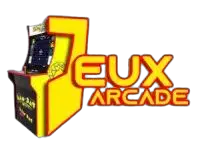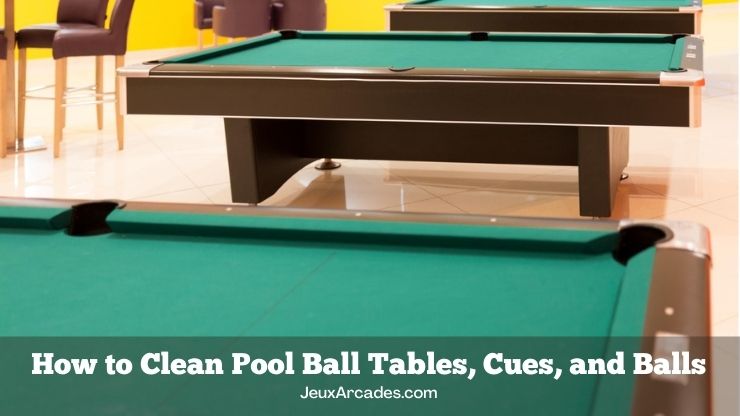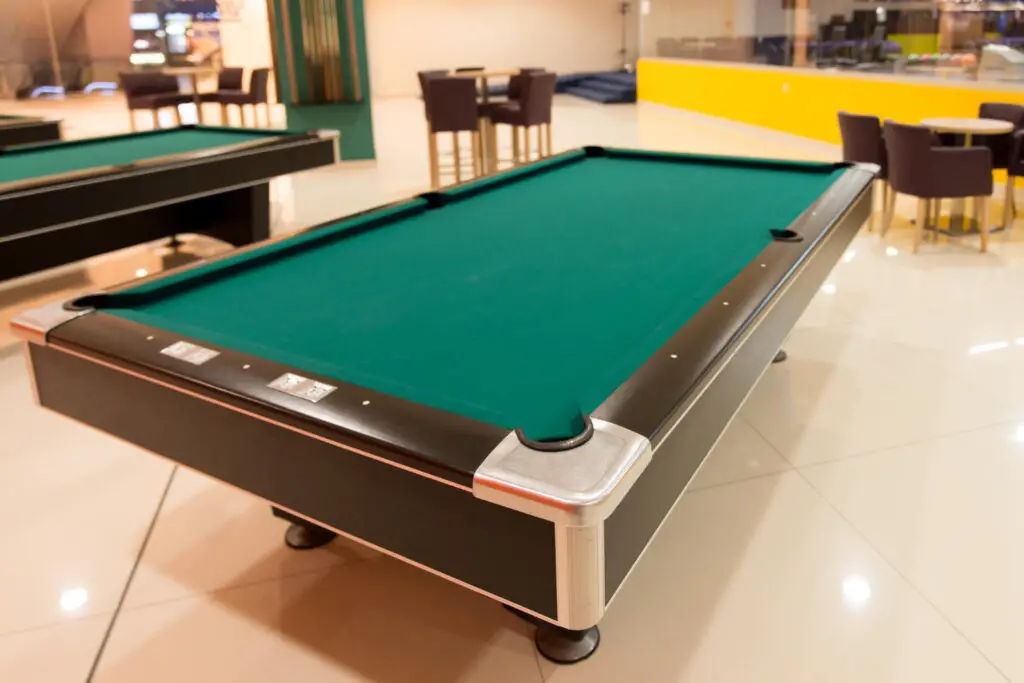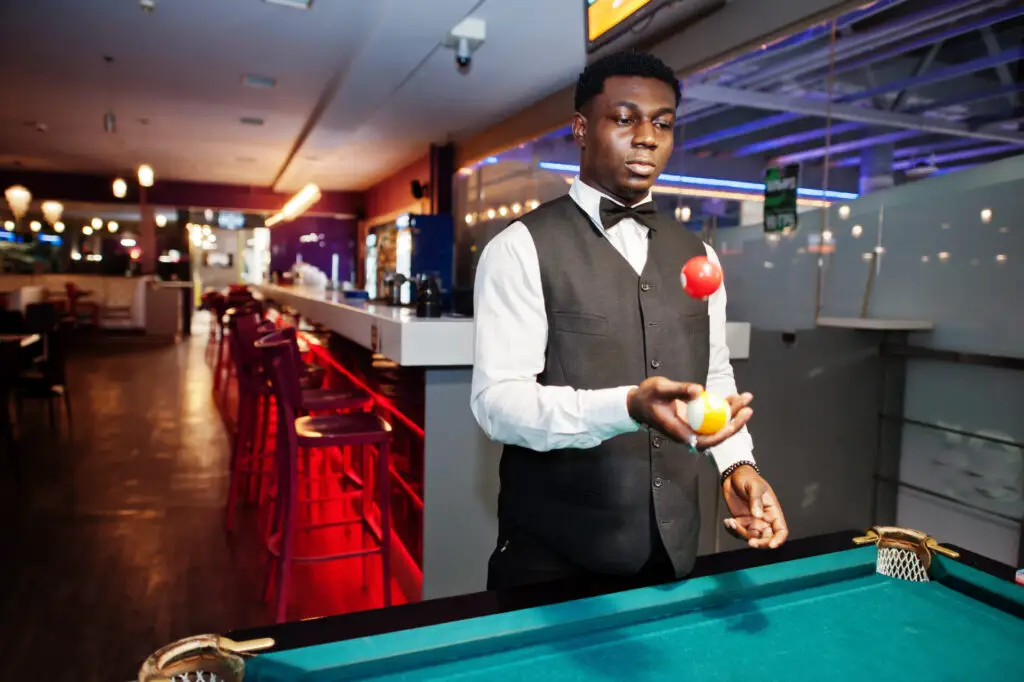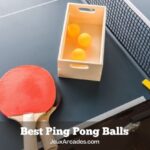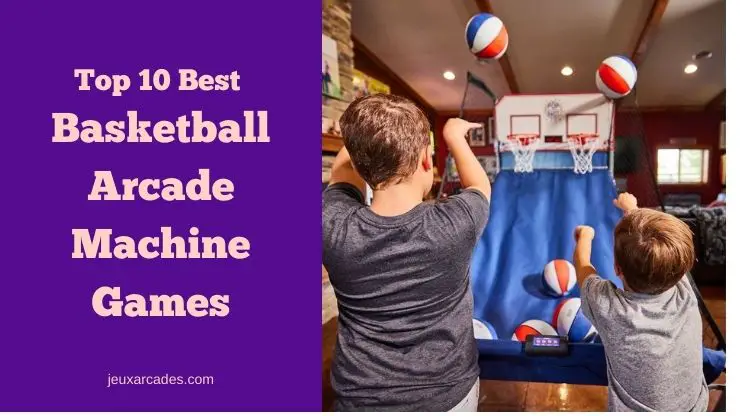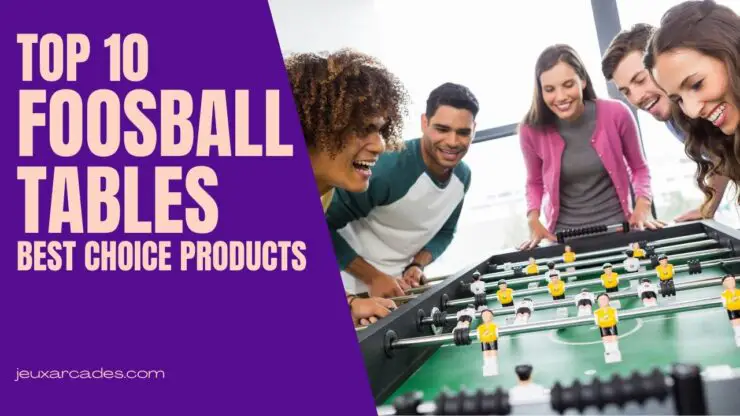Last Updated on by William J. Lopez
Playing pool tables can be a fantastic way for the entire family to spend time together. However, to ensure that the game remains enjoyable, it’s crucial to maintain the tables properly, and knowing how to clean the pool table is a fantastic thing.
Without proper care, pool tables can quickly lose their playability, necessitating the purchase of a new table – a costly expense that you’d undoubtedly prefer to avoid.
Thankfully, there are a few simple steps you can take to ensure that your pool table stays in top condition. Keeping the surface of the table clean and free of debris is essential, as is regular brushing and chalking of your pool cues to maintain their accuracy. It’s also a good idea to periodically inspect your table’s pockets and rails to ensure that they’re functioning correctly.
By following these straightforward maintenance steps, you can keep your pool table and cues in top shape and ensure that your family’s pool games remain enjoyable and competitive. So why not gather your loved ones and cue up for a fun-filled game of pool today?
Pool Table Maintenance
You can keep your pool table’s surface longer lasting and smooth. Learn how to properly clean pool tables, cues, and balls. These are the 3 essential things we can help you with.
1. Pool Cue Cleaning & Care
These are important to remember and apply to take good care of your tip and cue.
- Keep your tip clean, and make sure to chalk it regularly.
- A shooting billiard glove will ensure that the shaft stays cleaner. A shooting billiard glove will allow you to feel consistent on each shot.
- Wipe the shaft with a damp towel before or after each use. Use a moist towel to wipe the shaft. Be careful not to wet the tip. Twist the Cue to clean any shaft parts near the tip.
- Next, wipe off the rest of the Cue. You might also want to rub it dry. Imagine a wood shaft looking like this.
- You can use a Magic Eraser to remove most dirt and stains, and it won’t rub against the wood grain.
- You can remove dirt and stains with scouring paper or fine-grit sandpaper. They will reduce the grain shaft, but it is worth the effort if you get your grains clean.
- After you finish your deep cleaning, burning the shaft is a good idea. You can use the leather coaster’s backside or the leather inside of a belt. The Grain is sealed with burnishing, which gives it a shiny and smooth finish. Burnishing and shaft cleaning can bring back a dirty and damaged surface.
- If you have a shaft made of carbon fiber, it doesn’t require much maintenance. You can clean it with a dry towel.
- The grip can be washed with dishwashing detergent. Use a towel to remove all soap.
- Rubbish alcohol can be used to clean the shaft if it is oily or dirty.
- Do not slap the balls with the kill. You can get stung in the shaft of a wooded tree.
- Do not slam your Cue on the table or against other cues. This can lead to scratches.
- A Cue tip doesn’t have to be shaped. A harder tip will not wear down as quickly unless the top is flattening. You can use the same tip repeatedly without having to shape or scratch it. You might have to change them more frequently than you think. You can use shaping and scratching to renew your tips. But there are other options.
- The chalk stays on the tip until it stops working. To fix the problem, you can use regular abrasive salt.
- Round your tip until it is the same width as a dime. Use a shaper if it’s not perfectly round. After shaping it, the center of your work surface will look rough. This is not a problem. However, if you wish to smoothen it, use fine-grit sandpaper. It won’t scratch the surface of your work surfaces.
- Cosmetics tiles chalks, which glide on the tip like lipstick, are not recommended. They can cause abrasion and smears. The tip’s surface is not kept clean by them. The cue ball can also be damaged by its stickiness, called skid or kick.
- You’ll make a mistake if you miss a shot. It can be dangerous for your Cue if the ball slides on it. This area should be cleaned with sandpaper or aggressive chalk.
2. Pool Table Care & Cleaning
Keep your pool table tidy and well-maintained to ensure it lasts longer. These are some things to keep in mind.
- Don’t sit or lean on the table when you are not shooting.
- Do not place your entire weight on the floor or stand up at the table. Shooting requires that at least one of your feet touches the ground.
- Do not place food, drink, or other items on the dining table.
- Chalk should be used on rails. It can scratch rails, so facedown chalk is not recommended. You will see your opponent expecting it to face down.
- Use only a small amount of talc powder, either from a tell cone or powder bottle. An open bridge is fine. You can also use an open bridge to communicate with people in the human environment.
- Chalk over the table is not a good idea. Chalk debris can build up on the cloth and cause a slower rolling ball.
- Playing with messy food is not a good idea. Keep your hands clean.
- It is dangerous to use a table brush on your tables. If you do not vacuum your brushes, this can be an easy and quick way to clean your tables. Use the long-end bristles to vacuum the brushes off the table. Make sure you shake the brush before using them.
- If the table is frequently used, vacuum it every day. If the table isn’t used often, vacuum it once a week. A small vacuum can be used with a hose attachment. To remove dirt or dust from the cushions, use a brush. You can vacuum a single quadrant of a table at a given time. This will ensure that dirt and dust are closer to the edges and require less movement.
- If you have many tables that need to be cleaned, a Roomba vacuum cleaner is the best choice. You can push the button, and it will start. It will let you know when it is done. It also works well under cushions thanks to the rotating bristle brush.
- Use a moist cloth to clean the table. A microfiber cloth is possible. However, cotton works well. Make sure you remove any dirt or dust that remains after cleaning. Next, wipe the top and sides of the table with a damp cloth.
- When practicing your break, a cloth is an excellent option to protect the tablecloth. The tablecloth can get skid and burn marks if it is not covered with cloth. It would be best if you used an extra cloth to protect your tablecloth when you practice jump or masse shots.
- Another option is to not worry about any burner skid marks. These marks are a sign that you have played a lot.
- It’s a brilliant idea to use a table cover. You won’t need to clean the table as frequently, which will help keep it clean.
- Sometimes, the table may have pet hair or lint on it. The lint can be removed with a lint roller. My arms can get hairy and fall onto the table sometimes.
3. Pool Balls Cleaning & Care
- Do not hit an object’s balls with the Cue. You may get more often if you leave chalk marks. Also known as kick or skid, fling is also called a skid.
- Play with the balls, particularly after taking power shots. They can leave marks. These marks can be removed by cleaning them. Use a moist cloth to clean the balls.
- Power Shot left. You can play any time you want, whether the ball is in your hand. The Power Shot left a large chalk mark on the cue ball. You can remove these easily with a damp fingernail.
- When cleaning pool balls, it is best to use a product. You should clean your balls after each use. The balls can become dirty and lose their sparkle. It can be used if the machine is located in the pool hall. However, it would be best if you still cleaned them manually.
- You should not clean the soccer ball with the wrong product. This will impact your ability to play. Before applying the cleaner to your balls, first, shake it. Spray a couple of drops onto your palm and then rub the cleaner with your hands.
- After you are done with your towel, wash it in your hands to allow the towels to dry more thoroughly.
- Your pool balls won’t look shiny before buffing. Use a dry, clean cloth to buff the balls. After you’re done, the balls will look very shiny and clean.
Conclusion
Maintaining a pool table properly is essential to ensure that the whole family can enjoy playing on it for a long time. Regular cleaning and care of the pool table, cues, and balls will keep them in good condition and prolong their playability.
Taking care of the pool cue by cleaning the tip regularly, wiping the shaft before and after use, and burning the shaft is crucial. Keeping the pool table clean and tidy, avoiding leaning on the table, not placing food or drink on it, and vacuuming it regularly will help extend its lifespan. By following these maintenance tips, you can enjoy playing pool with your family for years to come without the need to purchase a new table.
Most Frequently Asked Questions
What can you do to remove yellow spots from your pool balls?
- Remove yellow spots from pool balls
- You can use a mild detergent with a soft fabric.
- Rub the stain gently until it disappears.
- Before using the ball again, rinse it with plenty of clean water.
What is the best way to get burn marks from a pool table?
First, you need to use wax or a cleaner. You can find many cleaners on the market, so make sure to check with your local pool hall for recommendations before you buy anything.
You can use the cleaner by using a rag to rub the surface of the ball in circular motions. Hope you get more knowledge about how to Clean Pool Table.
What is the best way to polish my pool ball?
It is not necessary to polish pool balls, but it makes them shine and look new. For speed control in pool and carom billiards, polished cue balls can be a great help.
You will require three items to polish your pool ball balls: a cloth that has one side flat for polishing, fine grit, and soapy water, as well as a towel with one side being smooth.
Use your fingers or a towel to clean each ball’s surface. The second step is to buff the ball using the 2-sided cloth in circular motions until it shines. Use sandpaper for any surface scratches. The balls can be rinsed with water and are now ready for play.
How do you store your pool balls safely?
There are many ways to store pool balls, but the best is to use a container that can hold them. These containers can hold different types of balls and are available in different sizes to suit your storage needs. A mesh bag is another way to store your pool balls.
This allows air to circulate to the balls and prevents them from becoming dirty or dusty. Some people also store their balls inside a container or box with a lid.
How can you avoid funny sounds coming from Cue when shooting?
Ever heard a shot with such a strange sound? This is usually caused by the joint not being tightened properly. Before you start playing, make sure it is well-tightened.
One should play at least once a week, especially after making a joke or taking a powerful shot.
What time should the Cue tip be replaced?
You should replace your chalk tip if it is no longer holding chalk. If the chalk tip is no longer holding chalk, the glue joint is broken, the scuff has been damaged or it’s no longer gripping the chalk, you should replace it.
You’ll still be able to play long hours if the hard tip chalk is used correctly and you don’t change or scuff too often.
How do you clean the pool cues?
Always ensure that the Cue does not get wet before you store or transport it. You can wipe the handle with a moist cloth and dry it after it has dried.
